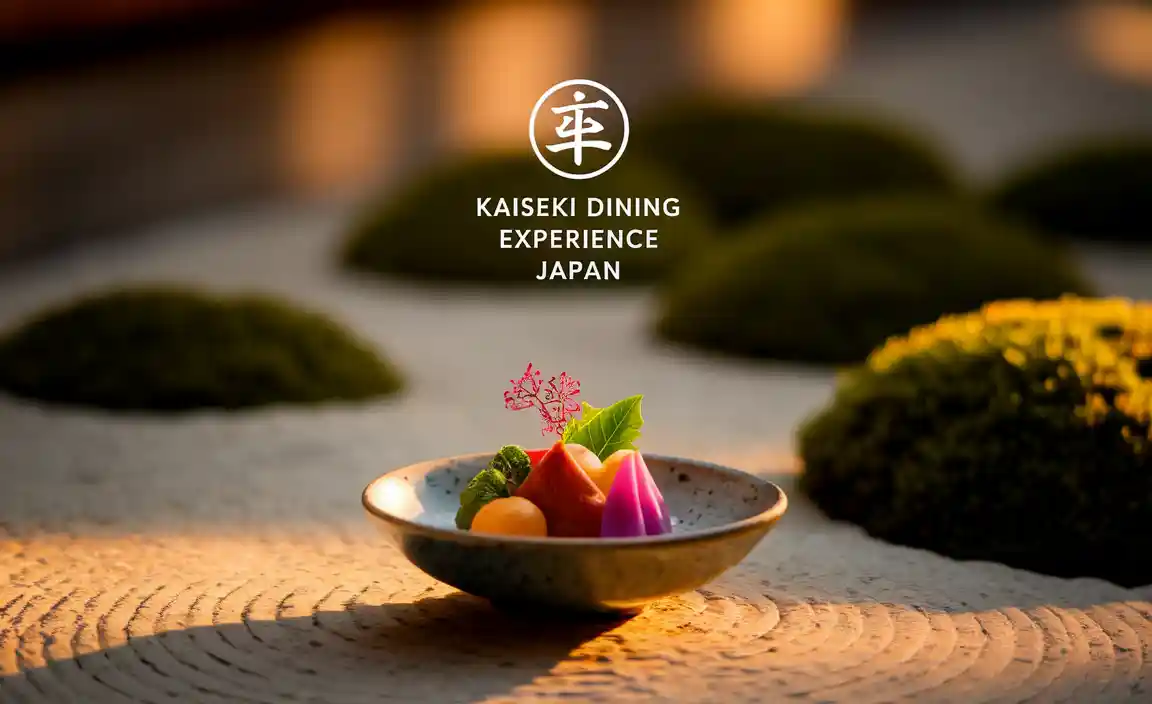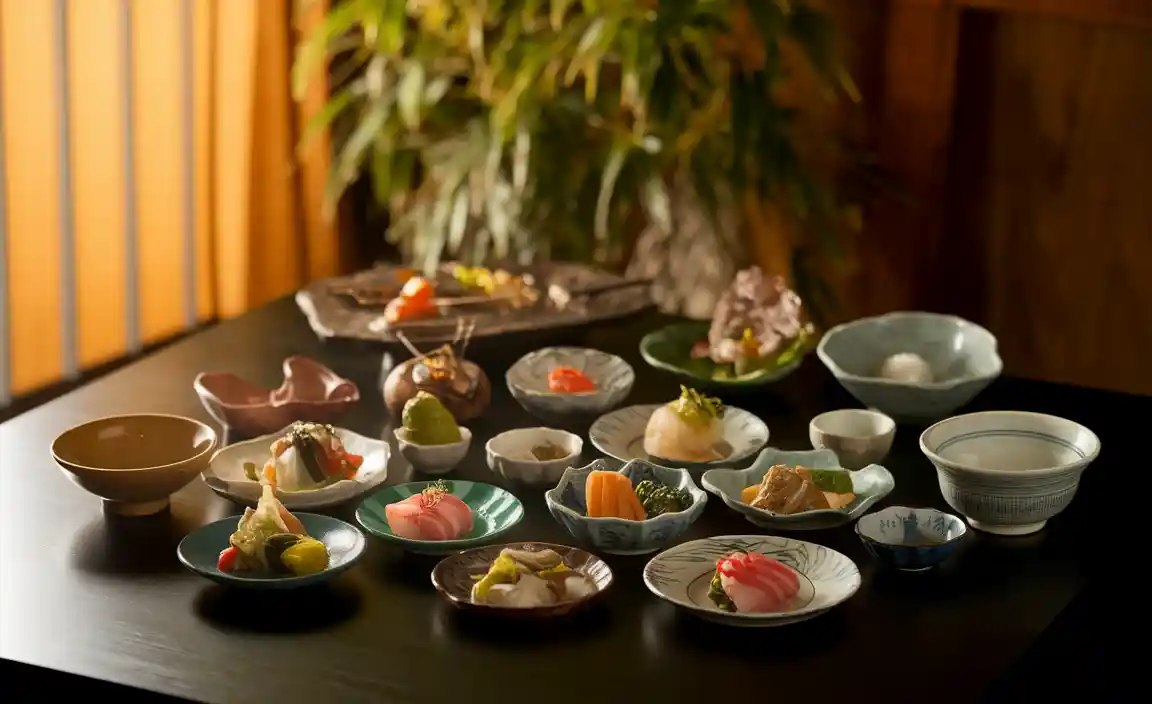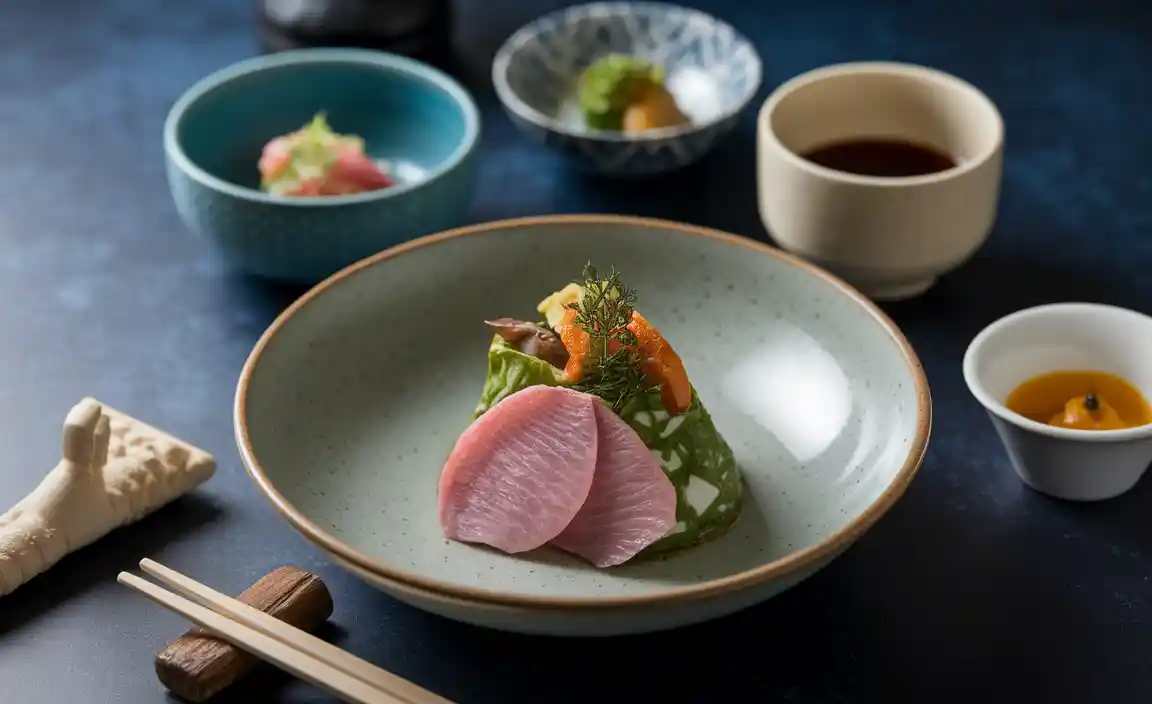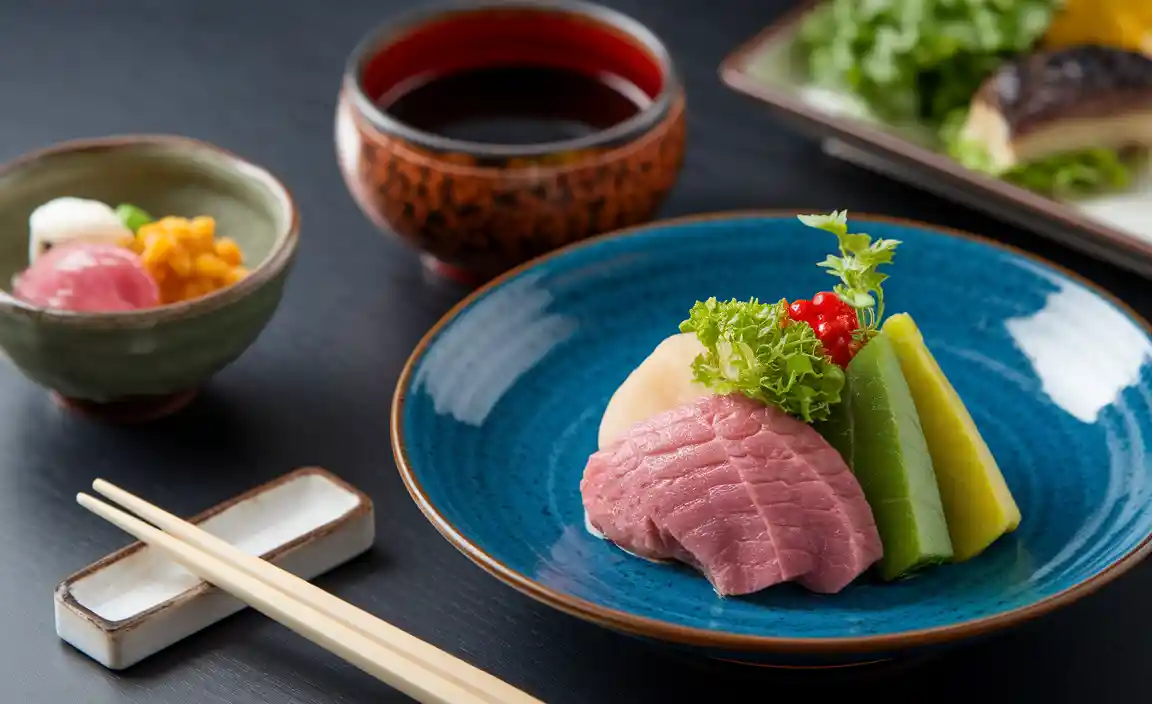Embark on a journey into Japan’s exquisite Kaiseki dining! This guide simplifies the elegant multi-course meal, explaining its philosophy, typical structure, and etiquette, ensuring you savor every moment of this rich culinary art form and cultural immersion.
Ever dreamt of a meal that’s as much a feast for the eyes as it is for your taste buds? That’s Kaiseki dining in Japan! It’s more than just food; it’s a meticulously crafted experience steeped in tradition and seasonality. Sometimes, thinking about foreign dining customs can feel a bit overwhelming, right? You might wonder what to expect, how to behave, or even how to pronounce it correctly! But don’t worry, FoodsGuider is here to make this refined culinary adventure accessible and enjoyable for everyone. We’ll break down everything you need to know, from the philosophy behind Kaiseki to the practicalities of your first meal, ensuring you feel confident and excited to explore this beautiful aspect of Japanese culture. Get ready to unlock the secrets of a truly unforgettable dining experience.

What is Kaiseki Dining? A Journey Through Japanese Culinary Art

Kaiseki (懐石) is a traditional multi-course Japanese haute cuisine. The term literally translates to “breast-stone,” referencing a warm stone once placed in the robes of Zen monks to suppress hunger during meditation. This origin hints at Kaiseki’s core philosophy: a mindful, delicate, and seasonal approach to food, designed to be savored slowly and appreciated fully. It’s an art form where every dish is a masterpiece, reflecting the chef’s skill, the season’s bounty, and a profound respect for ingredients.
Unlike a Western-style tasting menu that might focus on molecular gastronomy or experimental combinations, Kaiseki traditionally emphasizes subtle flavors and the natural essence of each ingredient. The beauty lies in its simplicity, seasonality, and the harmonious balance of tastes, textures, and visual presentation. It’s a culinary performance that engages all the senses, offering a deep dive into Japanese aesthetics and hospitality, known as omotenashi.
The Philosophy and Spirit of Kaiseki
At its heart, Kaiseki dining is guided by several key principles:
- Seasonality (Shun – 旬): This is paramount. Kaiseki chefs are deeply connected to the rhythm of nature, selecting ingredients at their absolute peak of freshness and flavor. A summer Kaiseki meal will feature vibrant, light dishes using seasonal produce, while an autumn meal might highlight earthy flavors and warming ingredients.
- Balance: The courses are designed to create a harmonious progression of flavors, textures, colors, and cooking methods. There’s a deliberate contrast and complementarity between each dish.
- Simplicity and Respect for Ingredients: The focus is on enhancing, not masking, the natural taste of the ingredients. Preparation methods are chosen to highlight the ingredient’s inherent quality.
- Aesthetics and Presentation: Each dish is a visual work of art. The arrangement of food, the choice of tableware, and the overall presentation are crucial, often inspired by nature and traditional Japanese art forms.
- Omotenashi (Hospitality): Kaiseki embodies the Japanese spirit of selfless hospitality. The entire experience, from the welcoming atmosphere to the attentive service, is designed to make the guest feel honored and comfortable.
Typical Kaiseki Course Structure
A Kaiseki meal is not just about eating; it’s a carefully orchestrated sequence of dishes designed to tell a story and guide your palate through a range of sensations. While the exact number and order can vary, a traditional Kaiseki meal typically includes the following courses:

- Sakizuke (先付): An appetizer to whet your appetite. It’s usually a small, flavorful dish, often something pickled or marinated, setting the tone for the meal.
- Hassun (八寸): This course highlights seasonal ingredients, often featuring a few small, artfully arranged items – perhaps a selection of sashimi, grilled vegetables, or small seafood bites. It represents the essence of the season.
- Mukōzuke (向付): This is the Sashimi course, showcasing the freshest, highest-quality raw fish. It’s served with soy sauce, wasabi, and sometimes a special dipping sauce.
- Takiawase (焚合): This dish involves ingredients simmered together gently. It often features vegetables and a protein like chicken or fish, seasoned with dashi and soy sauce for a comforting, subtly flavored course.
- Suimono (吸物): A clear, delicate soup. Often made with a light dashi broth, it might contain a single piece of seafood or a delicate dumpling, emphasizing purity of flavor and aroma.
- Yakimono (焼物): A grilled dish, typically featuring fish or seafood, seasoned simply to bring out its natural taste.
- Hira-zuke (平付け)/Shimono (下): Sometimes a palate cleanser or a small dish that bridges the gap between savory and sweet.
- Nōsu (強肴)/Mizumono (水物): A richer dish, often a stewed or steamed item that is more substantial than previous courses.
- Gohan (御飯)/Shokuji (食事): The rice course. Typically plain steamed rice, often served with miso soup (Misoshoku) and pickles (Tsukemono). This is the most grounding part of the meal.
- Kō no Mono (香の物): Assorted pickles, served alongside the rice to cleanse the palate and aid digestion.
- Mizumono (水物): The dessert. Usually a fresh seasonal fruit, or sometimes a delicate sweet like mochi or a small pastry. It’s light and refreshing, intended to end the meal on a clean note.
The order and specific dishes can vary greatly depending on the restaurant, the season, and the chef’s interpretation. Some Kaiseki experiences might feature more courses, while others are more concise, but the principle of a progressive journey remains.
Navigating Kaiseki Etiquette: A Guide for Beginners
Experiencing Kaiseki is a privilege, and understanding a few key etiquette points will enhance your enjoyment and show respect for the tradition. Don’t worry about being perfect; a genuine effort is always appreciated!
Before You Arrive
- Reservations are Essential: High-end Kaiseki restaurants, especially those with renowned chefs, often require reservations weeks or even months in advance. Be prepared to book early.
- Dress Code: While not always formal, it’s best to err on the side of smart casual. Avoid overly casual wear like shorts, flip-flops, or t-shirts. Some very high-end establishments may have stricter dress codes, so it’s worth checking when booking.
- Dietary Restrictions: Inform the restaurant of any allergies or significant dietary restrictions when you make your reservation. While Kaiseki is adaptable, some ingredients are central to the cuisine, so advanced notice is crucial.
During the Meal
- Sipping Sake: If you’re drinking sake, it’s polite to pour for your dining companions. When someone pours sake for you, hold your cup with both hands.
- Using Chopsticks (Ohashi – 箸):
- Never stick chopsticks upright in a bowl of rice, as this resembles offerings at a funeral.
- Do not pass food from your chopsticks directly to another person’s chopsticks; place it on their plate first.
- Avoid using your chopsticks to point, spear food, or drum on the table.
- Rest your chopsticks on the provided chopstick rest (hashioki) when not in use.
- Enjoying Each Course: Take your time to appreciate each dish. Observe its presentation, inhale its aroma, and then savor its taste. Don’t rush.
- Tableware: The dishes and bowls are often works of art themselves and are carefully chosen for each course. Handle them with care. If a lid is present, remove it gently and place it beside the bowl.
- Eating Soup: For clear soups (Suimono), it’s perfectly acceptable to drink directly from the bowl after you’ve eaten any solid ingredients, or you can use your chopsticks to lift the ingredients out first.
- Rice and Pickles: Eat the rice plain. Pickles are meant to be eaten in small bites between spoonfuls of rice or to cleanse the palate between other dishes.
- Saying “Itadakimasu” and “Gochisōsama deshita”: Before eating, say “Itadakimasu” (I humbly receive). After finishing, say “Gochisōsama deshita” (Thank you for the feast). These express gratitude.
What to Expect: The Kaiseki Atmosphere and Experience
Kaiseki restaurants are often designed to be serene and intimate. You might be seated at a counter where you can watch the chefs at work, or in private tatami rooms for a more exclusive experience. The ambiance is generally quiet and refined, encouraging conversation and appreciation of the meal.
The service is impeccable, characterized by omotenashi – anticipating your needs before you even realize them. Waitstaff are knowledgeable about the dishes, the ingredients, and the sake or wine pairings. They will explain each course as it is served, enhancing your understanding and appreciation.
The journey through a Kaiseki meal is often described as a dialogue between the chef and the diner, and between the diner and nature. Each dish offers a unique perspective on the season and the chef’s artistry. It’s a deliberate slowing down, a mindful engagement with food and culture that is at the core of the Kaiseki experience.
Key Takeaways for Your First Kaiseki Meal

| Aspect | Key Points for Beginners |
|---|---|
| Reservations | Book well in advance, especially for renowned establishments or peak seasons. |
| Dress Code | Smart casual is generally appropriate. Check with the restaurant if unsure. |
| Dietary Needs | Inform the restaurant when booking; essential for a good experience. |
| Chopstick Etiquette | Avoid sticking them in rice, passing food directly, or pointing. Use the rest. |
| Pace Yourself | Savor each dish; Kaiseki is a slow, deliberate experience. |
| Appreciation | Engage your senses – observe, smell, and taste. Understand the philosophy. |
| Gratitude | Use “Itadakimasu” before eating and “Gochisōsama deshita” after. |
A Deeper Dive: The Art of Kaiseki Ingredients
The soul of Kaiseki lies in its ingredients. Chefs meticulously source the finest produce, seafood, and meats, often from local purveyors. The emphasis is on ingredients that are:

- In Season: As mentioned, this is paramount. For instance, delicate vinegared dishes might feature young bamboo shoots in spring, while grilled eel is a summer favorite. Autumn brings mushrooms and root vegetables, and winter sees heartier stews and citrus fruits.
- Locally Sourced: Wherever possible, chefs prioritize ingredients from their immediate region, capturing the terroir and freshness that defines Japanese cuisine.
- High Quality: From the rice used in the steamed portion to the subtle dashi stock base, every component is selected for its superior quality and flavor profile.
- Visually Appealing: Color, shape, and texture are as important as taste. Chefs often meticulously prepare ingredients to enhance their natural beauty.
For a detailed understanding of Japanese culinary principles and seasonality, exploring resources from culinary institutions like the Japanese Ministry of Agriculture, Forestry and Fisheries on traditional Japanese food can be insightful. They highlight the cultural significance and agricultural practices embedded in Japanese cuisine.
Kaiseki vs. Other Japanese Dining Experiences
It’s easy to confuse Kaiseki with other Japanese dining styles. Here’s a quick comparison:
- Sushi/Sashimi: Primarily focused on raw fish and seafood, prepared minimally to highlight freshness and quality. While Kaiseki includes sashimi, it’s just one part of a larger meal.
- Tempura: Lightly battered and deep-fried seafood and vegetables. A Kaiseki meal might include a beautifully presented tempura course, but it’s not solely a tempura meal.
- Yakitori: Skewered and grilled chicken. A popular and often casual dining option, very different from the multi-course artistry of Kaiseki.
- Shabu-Shabu/Sukiyaki: Hot pot dishes where diners cook thinly sliced meat and vegetables in a broth. These are communal and interactive, distinct from the chef-prepared Kaiseki experience.
Kaiseki stands apart due to its comprehensive nature, its artistic presentation, its deep connection to seasonality, and its philosophical underpinnings. It offers a holistic culinary narrative that encompasses a wide variety of Japanese cooking techniques and flavors within a single meal.
Frequently Asked Questions About Kaiseki Dining
What is the most important aspect of Kaiseki dining?
Seasonality and the meticulous, respectful preparation of ingredients are the cornerstones of Kaiseki. Every dish aims to showcase the best of what nature offers at that specific time.
Do I need to know Japanese to enjoy Kaiseki?
No, you don’t need to know Japanese. Many high-end restaurants have English-speaking staff or provide menus in English. A genuine smile and an appreciative attitude go a long way!
What if I don’t like raw fish?
Kaiseki often includes a variety of cooked dishes, grilled items, simmered vegetables, and comforting soups. While sashimi is traditional, a good restaurant will accommodate dietary preferences if informed in advance.
How long does a Kaiseki meal typically take?
Kaiseki is a leisurely experience. Expect a meal to last anywhere from 2 to 4 hours, depending on the number of courses and the pace of service.
Is Kaiseki very expensive?
Kaiseki can range in price, but it is generally considered a fine-dining experience and can be quite expensive, reflecting the quality of ingredients, the skill of the chef, and the artistry involved. However, some restaurants offer more accessible lunch Kaiseki menus.
What’s the difference between a Kaiseki meal and a tasting menu?
While both are multi-course meals, Kaiseki is deeply rooted in Japanese tradition, seasonality, and specific aesthetic principles. A modern Western tasting menu might focus more on innovation and technique, whereas Kaiseki emphasizes natural flavors and artistic balance.
How should I thank the chef?
Expressing your gratitude is important. Saying “Gochisōsama deshita” is the standard way to thank for the meal. If you sit at a counter, a nod and a smile towards the chef when leaving is also appreciated.
Conclusion: Embracing the Elegance of Kaiseki
Embarking on a Kaiseki dining experience in Japan is more than just a meal; it’s an immersion into a rich cultural tradition that celebrates nature, artistry, and hospitality. From understanding the philosophy of seasonality and balance to mastering a few simple etiquette points, you’re now well-equipped to approach your first Kaiseki with confidence and excitement. Remember, the goal is to savor each moment, appreciate the exquisite details, and allow yourself to be transported by the chef’s culinary narrative. Whether you’re a seasoned traveler or a curious foodie, allowing yourself to explore this refined art form is a rewarding adventure. So, relax, be present, and let the symphony of flavors and aesthetics of Kaiseki enchant you. It’s an experience that nourishes not just the body, but the soul too.